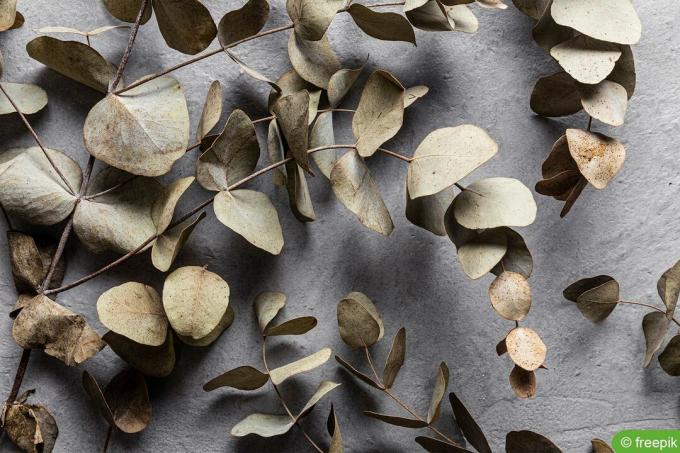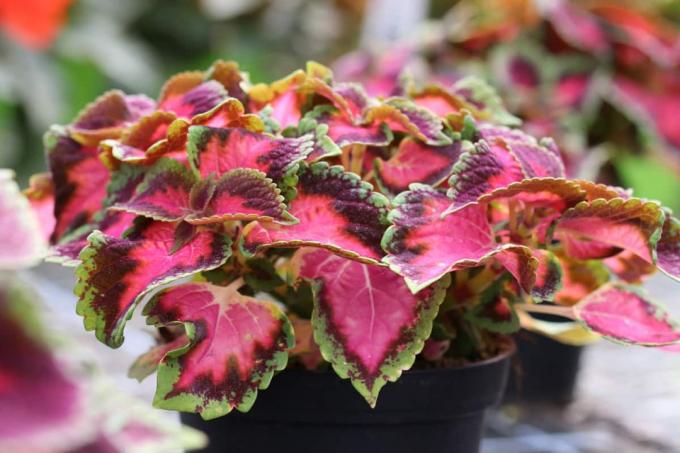

Table of contents
- This way your dahlias and gladioli will get through the winter well
- The ideal location is crucial for vigorous growth
- The right planting: the perfect start to the new flowering season
- Careful care strengthens the plants and increases flowering
- Sometimes pests and diseases appear
- Dahlias and gladioli as undemanding permanent bloomers
- Tips for overwintering dahlias
- Overwintering of gladioli
- Replant dahlias and gladioli
Dahlias and gladioli are among the most popular bulb and tuber plants. As thankful permanent bloomers, they will give you an incomparable splendor of flowers from June to October. Dahlias and gladioli come into their own in the flower bed or as a border. They are also wonderfully suitable as cut flowers.
Dahlias (Dahlia) are originally from Mexico. Many species are now native to us. Dahlias can grow up to 140 cm tall. They bloom from July to October, and their flowers can reach a diameter of up to 15 cm.
The gladioli (Gladiolus) from South Africa are now found in Central Europe.
Depending on the variety, the gladioli can reach a height of up to 150 cm. Its flowering period extends from June to October, the long inflorescences appear in spike-like form.
Dahlias and gladioli are robust and undemanding plants. However, their tubers should be overwintered frost-free.
This way your dahlias and gladioli will get through the winter well
Dahlia and gladioli bulbs are not hardy. However, under certain conditions, they can be overwintered very easily. Take the tubers out of the ground before the first frost and store them in a dark and frost-free place in the house. So that the tubers can store water and ripen better, the plants should no longer be watered after October. Mid-November is the ideal time to take the tubers out of the ground. Cut off the wilted foliage close to the ground and use a digging fork to dig up. Carefully remove the tubers from the garden soil. It is best to let the tubers dry in a warm place for a few days so that the soil can be loosened more easily. Remove the dry onion skin from the gladioli.
To prevent rotting, let them dry for a few days as well. However, be sure to protect the gladiolus bulbs from drying out. The smaller bulbs are separated and can also be overwintered. Keep only healthy bulbs and tubers. Rotting and damaged specimens can transmit rot and disease to the healthy tubers and are best composted right away. Wooden boxes lined with newspaper make good winter quarters for dahlia tubers.
Bed the healthy tubers in a dry peat-sand mixture. You can do this in layers to save space. Make sure, however, that the individual tubers do not touch each other. The temperature should be around 5°C, with warmer temperatures the dahlia tubers will sprout again early. If the humidity is high, store the bulb and tubers in dry sawdust. If the humidity is low, the tubers can dry out and shrivel. In this case you store about 5 pieces in a plastic bag that you make some air holes in.
It is also possible to overwinter the individual bulbs and tubers wrapped in newspaper. While the bulbs of dahlias and gladioli are in their winter quarters, they do not need any water or fertilizer. However, check them regularly for rot and infestation and remove diseased specimens. If you have many different bulbs and tubers, it will be helpful for planting planning in the following year if you label the individual pieces.
The ideal location is crucial for vigorous growth
Dahlias and gladioli do best in a sheltered spot in full sun or partial shade. Plant the tubers in good, humus-rich garden soil. The soil should be nutrient-rich and permeable, because waterlogging should be avoided at all costs because of the risk of rot. Give high-growing varieties support by protecting them from buckling with suitable plant supports.
The right planting: the perfect start to the new flowering season

The ideal time to plant dahlia bulbs is early May. Young plants grown indoors are sensitive to frost and are only allowed outside from mid-May, after the ice saints. Plant at a depth of 5 to 10 cm, with the root collar pointing upwards. The distance between the individual bulbs should be at least 30 cm. For tall varieties, choose a planting distance of about 100 cm. Cover the tubers with a 5 cm layer of soil. The gladioli can go outside as early as mid-April. Plant the bulbs flat side down 10 to 15 cm deep, leaving plenty of space between each bulb. As soon as the first shoots appear, the dahlias and gladioli can be watered. Do not water too early, otherwise there is a risk of rot!
Careful care strengthens the plants and increases flowering
Regular watering and fertilizing promote growth and flowering. However, be sure to avoid too much water and waterlogging, as this can lead to rot. If you constantly remove faded leaves and seed buds, the plants will thank you with enduring blooming joy. Regular cleaning strengthens the plants and helps to prevent any fungal diseases. The last fertilization takes place in August, because from this point on the tubers can still mature well, gather enough strength and thus prepare for the forthcoming hibernation.
Sometimes pests and diseases appear
Dahlias and gladioli are robust plants. But pests or diseases can also occur here. The young shoots of the dahlias occasionally fall victim to snail damage. Natural snail control agents provide a quick remedy. The gladiolus can be susceptible to gray mold or leaf spot. Various treatments are available in specialist shops.
Dahlias and gladioli as undemanding permanent bloomers
Dahlias and gladioli are among the most popular bulb and tuber plants. These grateful perpetual bloomers are hardy and easy to care for. They need good, well-drained garden soil and love a sheltered spot in the sun. If you overwinter the tubers carefully, you will be rewarded with a magnificent variety of flowers year after year.
Tips for overwintering dahlias
Dahlia tubers are dug up before the onset of the first night frosts and freed from the soil and remaining leaf remains. They need a place to hibernate that is airy and ideally around 5°C. To prevent the tubers from rotting, it is best to place them on a wire rack and turn them over from time to time during the winter. Sections of the tubers that have become rotten can also be removed at the same time.
Overwintering of gladioli
Gladiolus bulbs are also dug up in autumn, the best time for this is when they have already drawn in their leaves. Then the soil and the rest of the foliage are removed from them too, to be stored in an airy place on a wire mesh, in a cardboard box or in a wooden box. With gladioli, the temperature in the winter quarters can be slightly higher than with dahlias. However, it should not be more than 15°C.
Some gladioli do not bloom until September or even later. Then it is usually not worth overwintering the tubers because the plant does not have enough time before winter sets in to store the necessary nutrients in its tubers. The same problem also exists when many flowers have been cut to use in a vase. Then the necessary foliage for photosynthesis was missing and it is advisable to buy new tubers for the next year in order to have a beautiful flower again.
Replant dahlias and gladioli
Both flowers can be planted back in the garden in April. Then there can still be night frosts, but the risk of damage to the tubers is relatively low. In this way, they still have enough time after flowering to gather enough nutrients for the next winter.
- Dahlias, like gladioli, need a sunny spot to form beautiful flowers. There, a hole about ten centimeters deep is dug for each tuber, the tuber is placed in it and covered with earth.
- Gladioli should not be planted in the same spot as last year, because the flowers won't be as beautiful there.
- When planting, make sure that the tubers are not planted upside down. The old shoots should point upwards again; the flat side of the gladioli should face downwards.
- At the same time as planting the tuber, the stick should be put into the ground, which will later serve as a support for the flowers. This way the tuber will not be damaged later.
 garden editorial
garden editorial I write about everything that interests me in my garden.
Learn more about overwintering plants

Eucalyptus dries up during the winter: what to do?
Eucalyptus in tubs spends the winter best in a frost-protected place in the house. It is not uncommon for the beautiful eucalyptus plants to dry up during the winter. We show what you can do about it.

Is bamboo hardy? Hibernate bamboo correctly
A bamboo can undoubtedly enrich any garden. But can it survive winter temperatures in good health? There is no general answer. It depends on the species and what winter protection it gets.

Is the colored nettle hardy? 6 tips for wintering
Summer is the season when the colors of these ornamental foliage plants are at their most intense. Most of the leaves are multicolored, with different drawings, wavy or heavily slit edges.

Is Camellia japonica hardy? Overwinter camellia properly
Anyone who sees a blooming camellia for the first time will definitely be amazed. The attractive plant, which came to Central Europe from Japan and Korea, has taken the hearts of hobby gardeners by storm. It is usually cultivated in tubs. Is she hardy?

Is the magic flower hardy? | Overwinter Mirabilis jalapa
The Japanese miracle flower (Mirabilis jalapa) delights its viewers with its bright and colorful flowers from June to October. It carries up to five different colored flowers on one and the same plant. Even a single flower can be multicolored.

Is rhododendron hardy? 6 tips for wintering
Overwintering rhododendrons: With these 6 tips you can get the azaleas through the winter safely!
